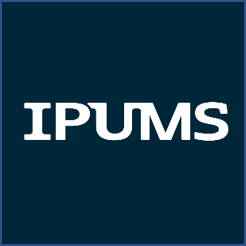Demographic and Health Survey 2016 - IPUMS Subset
Nepal, 2016
Get Microdata
Reference ID
NPL_2016_DHS_v01_M_v01_A_IPUMS
Producer(s)
Ministry of Health, Nepal; New ERA; and ICF., Minnesota Population Center
Collection(s)
Metadata
Created on
May 01, 2020
Last modified
May 14, 2020
Page views
96453
Source of fever/cough treatment: Other NGO (Nepal) (C_FEVTRNP9)
Data file: NPL2016-C.dat
Overview
Type:
Discrete
Decimal:
0
Start:
1888
End:
1889
Width:
2
Range:
-
Format:
Numeric
Questions and instructions
Literal question
625. Where did you seek advice or treatment? Anywhere else? PROBE TO IDENTIFY THE TYPE OF SOURCE. IF UNABLE TO DETERMINE IF PUBLIC OR PRIVATE SECTOR, WRITE THE NAME OF THE PLACE.
NAME OF PLACE __
PUBLIC SECTOR
GOVT. HOSPITAL/CLINIC A
PHC CENTER B
HEALTH POST/SUB-HEALTH POST C
PHC OUTREACH CLINIC D
FCHV E
OTHER PUBLIC FACILITIES (SPECITY) ___ F
NON-GOVT. (NGO)
FPAN G
MARIE STOPES H
OTHER NGO FACILITIES (SPECIFY) __ I
PRIVATE MEDICAL SECTOR
PVT. HOSPITAL/NURSING HOME J
PRIVATE CLINIC K
PHARMACY L
OTHER PRIVATE MEDICAL FACILITIES (SPECIFY) ___ M
OTHER SOURCE
SHOP N
TRADITIONAL PRACTITIONER O
OTHER (SPECIFY) __ X
NAME OF PLACE __
PUBLIC SECTOR
GOVT. HOSPITAL/CLINIC A
PHC CENTER B
HEALTH POST/SUB-HEALTH POST C
PHC OUTREACH CLINIC D
FCHV E
OTHER PUBLIC FACILITIES (SPECITY) ___ F
NON-GOVT. (NGO)
FPAN G
MARIE STOPES H
OTHER NGO FACILITIES (SPECIFY) __ I
PRIVATE MEDICAL SECTOR
PVT. HOSPITAL/NURSING HOME J
PRIVATE CLINIC K
PHARMACY L
OTHER PRIVATE MEDICAL FACILITIES (SPECIFY) ___ M
OTHER SOURCE
SHOP N
TRADITIONAL PRACTITIONER O
OTHER (SPECIFY) __ X
Categories
| Value | Category |
|---|---|
| 00 | No |
| 10 | Yes, sought treatment at other NGO |
| 11 | Sought treatment for fever |
| 12 | Sought treatment for cough |
| 13 | Sought treatment for fever or cough |
| 14 | Sought treatment for fever and cough |
| 15 | Sought treatment for cough and convulsions |
| 16 | Sought treatment for convulsions |
| 17 | Sought treatment for fever or rapid/difficult breathing |
| 98 | Missing |
| 99 | NIU (not in universe) |
Warning: these figures indicate the number of cases found in the data file. They cannot be interpreted as summary statistics of the population of interest.
Description
Definition
For children with a fever or cough in the past 2 weeks, FEVTRNP9 indicates, in response to an open-ended question, whether the child received treatment from some other non-governmental organization. The meaning of "other" must be interpreted relative to the specific categories included in a particular sample. This response category is country-specific to Nepal.
Some samples in the "FEVTR" series include multiple categories that can be consolidated into a single broad response. IPUMS-DHS uses supplemental programming to combine these responses in a standard variable, while also preserving the separate responses in country-specific variables.
FEVTRNP9 is combined with other NGOs in the 2001, 2006, 2011, and 2016 Nepal surveys.
In the 2001 and 2006 Nepal surveys, FEVTRNP9 is combined with FEVTRNP6 (United Mission to Nepal) in FEVTRNGO (all NGOs).
In the 2011 Nepal survey, FEVTRNP9 is combined with FEVTRNP6 (United Mission to Nepal) and FEVTRNP7 (Family Planning Association of Nepal) in FEVTRNGO (all NGOs).
In the 2011 Nepal survey, FEVTRNP9 is combined with FEVTRNP7 (Family Planning Association of Nepal) and FEVTRNP8 (Marie Stopes) in FEVTRNGO (all NGOs).
IPUMS-DHS users interested in using FEVTRNP9 are encouraged to review FEVTRNGO for a more comprehensive response category.
A few samples ask separately about treatment sought for fever and treatment sought for cough. IPUMS-DHS uses supplemental programming to combine these responses in a standard variable while preserving the separate responses in composite coding. A first digit of 1 indicates treatment was sought, and the second digit indicates the child's illness. For example, a code of "11" indicates the treatment was sought for the child's fever, a code of "12" indicates treatment was sought for the child's cough, and a code of "14" indicates treatment was sought for both the child's fever and cough.
Some samples in the "FEVTR" series include multiple categories that can be consolidated into a single broad response. IPUMS-DHS uses supplemental programming to combine these responses in a standard variable, while also preserving the separate responses in country-specific variables.
FEVTRNP9 is combined with other NGOs in the 2001, 2006, 2011, and 2016 Nepal surveys.
In the 2001 and 2006 Nepal surveys, FEVTRNP9 is combined with FEVTRNP6 (United Mission to Nepal) in FEVTRNGO (all NGOs).
In the 2011 Nepal survey, FEVTRNP9 is combined with FEVTRNP6 (United Mission to Nepal) and FEVTRNP7 (Family Planning Association of Nepal) in FEVTRNGO (all NGOs).
In the 2011 Nepal survey, FEVTRNP9 is combined with FEVTRNP7 (Family Planning Association of Nepal) and FEVTRNP8 (Marie Stopes) in FEVTRNGO (all NGOs).
IPUMS-DHS users interested in using FEVTRNP9 are encouraged to review FEVTRNGO for a more comprehensive response category.
A few samples ask separately about treatment sought for fever and treatment sought for cough. IPUMS-DHS uses supplemental programming to combine these responses in a standard variable while preserving the separate responses in composite coding. A first digit of 1 indicates treatment was sought, and the second digit indicates the child's illness. For example, a code of "11" indicates the treatment was sought for the child's fever, a code of "12" indicates treatment was sought for the child's cough, and a code of "14" indicates treatment was sought for both the child's fever and cough.
concept
Concept
| var_concept.title | Vocabulary |
|---|---|
| Source for respiratory treatment, CS Variables -- TOPICS | IPUMS |
